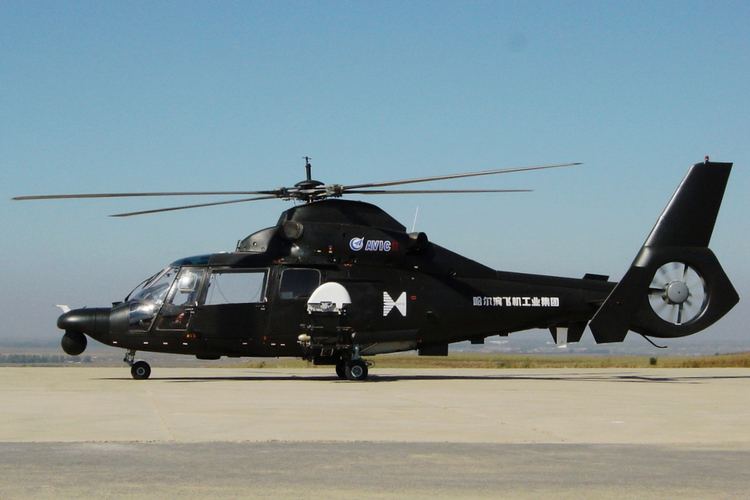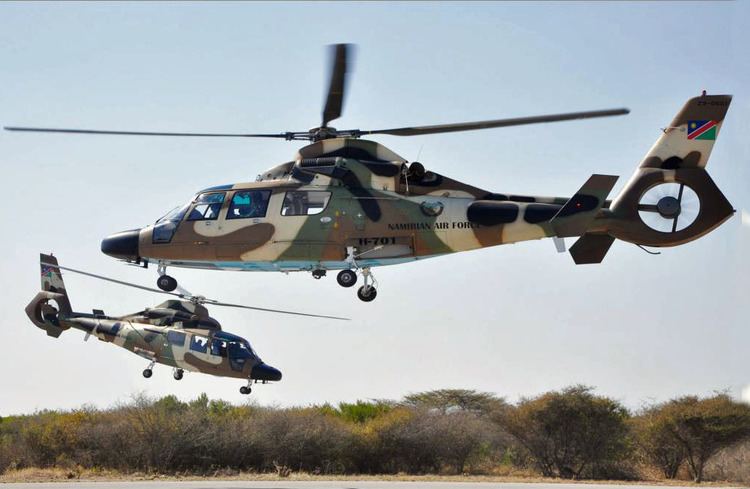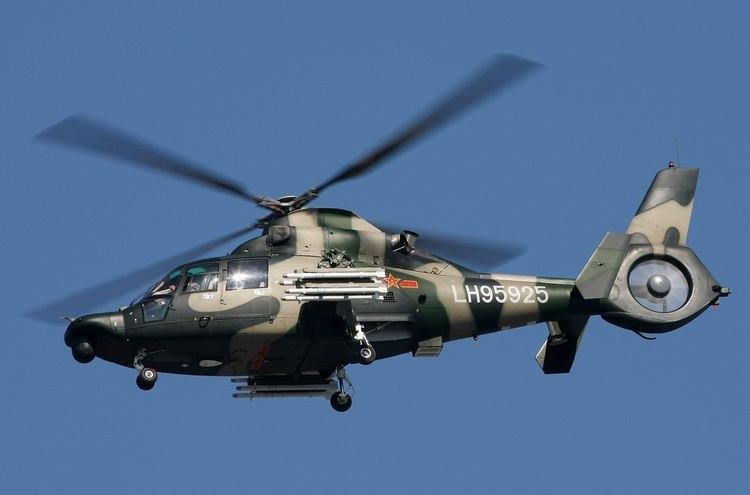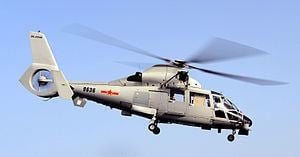Top speed 305 km/h Range 1,000 km Engine type Turboshaft | Wingspan 12 m Length 12 m First flight 1981 | |
 | ||
Unit cost 10,600,000–10,600,000 USD (2013) | ||
China shows off elite harbin z 9 helicopter
The Harbin Z-9 (NATO reporting name "Haitun", Chinese: 海豚 for Dolphin) is a Chinese military utility helicopter. It is a licensed variant of the French Eurocopter AS365 Dauphin, and is manufactured by Harbin Aircraft Manufacturing Corporation.
Contents
- China shows off elite harbin z 9 helicopter
- Harbin z 9 helicopter
- Design and development
- Variants
- Operators
- Specifications Z 9B
- Accident
- References

Harbin z 9 helicopter
Design and development

The first Z-9 flew in 1981, and was built in China from components supplied by Aérospatiale as part of a production patent bought on 15 October 1980. On 16 January 1992, the indigenous variant Z-9B, constructed with 70% Chinese-made parts, flew successfully. The flight test was completed in November 1992 and the design was finalized a month later. Z-9B production began in 1993 and entered PLA service in 1994.

The Z-9B features 11-blade Fenestron faired-in tail rotor with wider-chord, all-composite blades replacing the 13-blade in AS 365N. As a light tactical troop transport, the Z-9 has the capacity to transport 10 fully armed soldiers. Generally the Z-9 is identical to the AS 365N Dauphin, though later variants of the Z-9 incorporate more composite materials to increase structural strength and lower radar signature. The helicopter has a four-blade main rotor, with two turboshaft engines mounted side by side on top of the cabin with engine layout identical to the AS 365N. The Z-9 teardrop-shaped body features a tapered boom to the tail fin, with rounded nose and stepped-up cockpit, and retractable gear and all flat bottom.

In 2002, Harbin obtained Chinese certification for the new H410A variant of the Z-9, which featured more powerful Turbomeca Arriel 2C turboshaft engines; Eurocopter issued official objections to Harbin's decision to continue production in spite of the license-production agreement having expired, leading to a period of highly sensitive international negotiations to resolve the dispute.
Variants

An armed variant has been fielded by the PLA since the early 1990s as the WZ-9 or Z-9W, with pylons fitted for anti-tank missiles. These helicopters lack the maneuverability and survivability of a proper attack helicopter, and merely provide a stopgap during the development of the WZ-10. The latest armed version, the Z-9W, was introduced in 2005 and has night attack capabilities, with an under-nose low-light TV and infra-red observing and tracking unit.
The naval version introduced in the 1990s is known as the Z-9C. As well as SAR and ASW duties, the Z-9C can be fitted with an X-band KLC-1 surface search radar to detect surface targets beyond the range of shipborne radar systems.
Operators
Specifications (Z-9B)
Data from
General characteristics
Performance
Armament
2 fixed 23 mm Type 23-2 (AM-23) cannon on attack variants. Pylons for rockets, gun pods, ET52 torpedo, HJ-8 anti-tank missiles, or TY-90 air-to-air missiles.
Accident
On 14 July 2014, Cambodian Air Force's Z-9 crashed into a flooded quarry in the southwest of Phnom Penh, during a military training. This accident caused 4 deaths and 1 serious injury. Investigation has begun as the helicopter has been taken out of water. Officials claimed that there was no technical issue before its take off.
